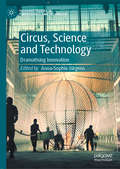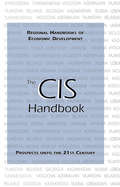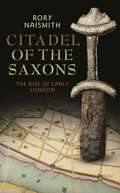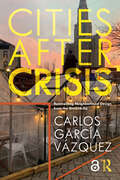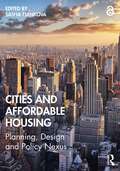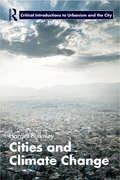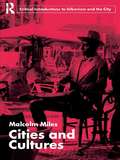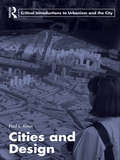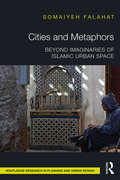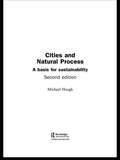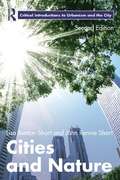- Table View
- List View
Circus Ringmaster (UEB uncontracted)
This is a picture of the circus ringmaster in his traditional costume holding a whip. He is standing facing forward in the middle of the page so all his limbs and facial features can be seen. There is a locator dot shown, which will be at the top left of the page when the image is the right way up. At the top of the page is the ringmaster's tall top hat with some wisps of hair sticking out. Just down the page is his face with two eyes, nose and mouth visible. Down again are his bow tie, shirt and three-buttoned waistcoat. To either side are the lapels of his long frock coat, which comes down to his waist at the front and to his knees at the back. It has two buttons to the left of the waistcoat buttons. His arms are held out wide, the one to the right is holding the whip. Further down the page the ringmaster wears long trousers tucked into his long leather riding boots.
Circus, Science and Technology: Dramatising Innovation (Palgrave Studies in Performance and Technology)
by Anna-Sophie JürgensThis book explores the circus as a site in and through which science and technology are represented in popular culture. Across eight chapters written by leading scholars – from fields as varied as performance and circus studies, art, media and cultural history, and engineering – the book discusses to what extent the engineering of circus and performing bodies can be understood as a strategy to promote awe, how technological inventions have shaped circus and the cultures it helps constitute, and how much of a mutual shaping this is. What kind of cultural and aesthetic effects does engineering in circus contexts achieve? How do technological inventions and innovations impact on the circus? How does the link between circus and technology manifest in representations and interpretations – imaginaries – of the circus in other media and popular culture? Circus, Science and Technology examines the ways circus can provide a versatile frame for interpreting our relationship with technology.
The CIS Handbook (Regional Handbooks of Economic Development)
by Patrick Heenan Monique LamontagneFirst Published in 2000. Routledge is an imprint of Taylor & Francis, an informa company.
The CIS Handbook (Regional Handbooks of Economic Development #Vol. 4)
by Patrick Heenan Monique Lamontagne Ronald J. Hill Bogdan SzajkowskiFirst Published in 2000. Routledge is an imprint of Taylor & Francis, an informa company.
Cisterns: Sustainable Development, Architecture and Energy (River Publishers Series In Chemical, Environmental, And Energy Engineering Ser.)
by Alireza Dehghani-sanij Ali SayighCisterns: Sustainable Development, Architecture and Energy was written on beliefs that based on historical evidence and actual findings, Iran is most probably the country where cisterns, or Aub-anbars in Farsi, were first developed and built. Therefore, it is quite natural for the author to name cisterns in the text Aub-anbars, as it has been called for centuries in this country, the translation of the same name having been used in other countries too. Although in some books, journals and papers published out of Iran by foreign and Iranian scholars, the names Cistern or Water Reservoir have been used. The word Aub-anbar is a compound noun in Farsi; Aub means water and Anbar means tank/reservoir. Putting them together gives the noun Aub-anbarand it should be used as one word.People of the region wanting reserved cool water whether in cities or in different locations across the harsh desert during their travel. Queen Zubeida, the wife of Khalifa Haroon Al-Rasheed in 750 AD built one of these cistern closer to the town of Hiyal in Saudi Arabia so that the Pilgrims? Caravans going to Mecca will have cool, fresh water. This book consists of 11-chapters with full analysis, illustrations and photographs. It makes interesting readings to those interested into vernacular architecture, traditional buildings and creative thinking.
Cisterns: Sustainable Development, Architecture and Energy
by Alireza Dehghani-sanij Ali SayighCisterns: Sustainable Development, Architecture and Energy was written on beliefs that based on historical evidence and actual findings, Iran is most probably the country where cisterns, or Aub-anbars in Farsi, were first developed and built. Therefore, it is quite natural for the author to name cisterns in the text Aub-anbars, as it has been called for centuries in this country, the translation of the same name having been used in other countries too. Although in some books, journals and papers published out of Iran by foreign and Iranian scholars, the names Cistern or Water Reservoir have been used. The word Aub-anbar is a compound noun in Farsi; Aub means water and Anbar means tank/reservoir. Putting them together gives the noun Aub-anbarand it should be used as one word.People of the region wanting reserved cool water whether in cities or in different locations across the harsh desert during their travel. Queen Zubeida, the wife of Khalifa Haroon Al-Rasheed in 750 AD built one of these cistern closer to the town of Hiyal in Saudi Arabia so that the Pilgrims? Caravans going to Mecca will have cool, fresh water. This book consists of 11-chapters with full analysis, illustrations and photographs. It makes interesting readings to those interested into vernacular architecture, traditional buildings and creative thinking.
Citadel of the Saxons: The Rise of Early London
by Rory NaismithWith a past as deep and sinewy as the famous River Thames that twists like an eel around the jutting peninsula of Mudchute and the Isle of Dogs, London is one of the world's greatest and most resilient cities. Born beside the sludge and the silt of the meandering waterway that has always been its lifeblood, it has weathered invasion, flood, abandonment, fire and bombing. The modern story of London is well known. Much has been written about the later history of this megalopolis which, like a seductive dark star, has drawn incomers perpetually into its orbit. Yet, as Rory Naismith reveals – in his zesty evocation of the nascent medieval city – much less has been said about how close it came to earlier obliteration. Following the collapse of Roman civilization in fifth-century Britannia, darkness fell over the former province. Villas crumbled to ruin; vital commodities became scarce; cities decayed; and Londinium, the capital, was all but abandoned. Yet despite its demise as a living city, memories of its greatness endured like the moss and bindweed which now ensnared its toppled columns and pilasters. By the 600s a new settlement, Lundenwic, was established on the banks of the River Thames by enterprising traders who braved the North Sea in their precarious small boats. The history of the city's phoenix-like resurrection, as it was transformed from an empty shell into a court of kings – and favoured setting for church councils from across the land – is still virtually unknown. The author here vividly evokes the forgotten Lundenwic and the later fortress on the Thames – Lundenburgh – of desperate Anglo-Saxon defenders who retreated inside their Roman walls to stand fast against menacing Viking incursions.Recalling the lost cities which laid the foundations of today's great capital, this book tells the stirring story of how dead Londinium was reborn, against the odds, as a bulwark against the Danes and a pivotal English citadel. It recounts how Anglo-Saxon London survived to become the most important town in England – and a vital stronghold in later campaigns against the Normans in 1066. Revealing the remarkable extent to which London was at the centre of things, from the very beginning, this volume at last gives the vibrant early medieval city its due.
Citadel of the Saxons: The Rise of Early London
by Rory NaismithWith a past as deep and sinewy as the famous River Thames that twists like an eel around the jutting peninsula of Mudchute and the Isle of Dogs, London is one of the world's greatest and most resilient cities. Born beside the sludge and the silt of the meandering waterway that has always been its lifeblood, it has weathered invasion, flood, abandonment, fire and bombing. The modern story of London is well known. Much has been written about the later history of this megalopolis which, like a seductive dark star, has drawn incomers perpetually into its orbit. Yet, as Rory Naismith reveals – in his zesty evocation of the nascent medieval city – much less has been said about how close it came to earlier obliteration. Following the collapse of Roman civilization in fifth-century Britannia, darkness fell over the former province. Villas crumbled to ruin; vital commodities became scarce; cities decayed; and Londinium, the capital, was all but abandoned. Yet despite its demise as a living city, memories of its greatness endured like the moss and bindweed which now ensnared its toppled columns and pilasters. By the 600s a new settlement, Lundenwic, was established on the banks of the River Thames by enterprising traders who braved the North Sea in their precarious small boats. The history of the city's phoenix-like resurrection, as it was transformed from an empty shell into a court of kings – and favoured setting for church councils from across the land – is still virtually unknown. The author here vividly evokes the forgotten Lundenwic and the later fortress on the Thames – Lundenburgh – of desperate Anglo-Saxon defenders who retreated inside their Roman walls to stand fast against menacing Viking incursions.Recalling the lost cities which laid the foundations of today's great capital, this book tells the stirring story of how dead Londinium was reborn, against the odds, as a bulwark against the Danes and a pivotal English citadel. It recounts how Anglo-Saxon London survived to become the most important town in England – and a vital stronghold in later campaigns against the Normans in 1066. Revealing the remarkable extent to which London was at the centre of things, from the very beginning, this volume at last gives the vibrant early medieval city its due.
Cities: An Environmental History (Environmental History and Global Change)
by Ian DouglasCities are amongst our greatest creations. Yet at the start of the twenty-first century there is increasing concern over their unchecked expansion and the detrimental effect this is having on the planet, as induced climate change and ever increasing demands upon the world's resources take effect. How can we make the world's cities more sustainable? Ian Douglas tells the story of cities – why they exist, how they have evolved, the problems they have encountered and those they will face as our century progresses. Global in geographical coverage, and ranging from the cities of the classical world to the megacities of today, it is the first comprehensive environmental history of cities. Suitable as a textbook for undergraduate and master's course in environmental management, environmental science, planning, urban geography, planning.
Cities After Crisis: Reinventing Neighborhood Design from the Ground-Up
by Carlos Garcia VazquezCities After Crisis shows how urbanism and urban design is redefining cities after the global health, economic, and environmental crises of the past decades. The book details how these crises have led to a new urban vision—from avantgarde modern design to an artisan aesthetic that calls for simplicity and the everyday, from the sustainable development paradigm to a resilient vision that defends de-growth and the re-wilding of cities, from a homogenizing globalism to a new localism that values what is distinctive and nearby, from the privatization of the public realm to the commoning and self-governance of urban resources, and from top-down to bottom-up processes based on the engagement and empowerment of communities. Through examples from cities around the world and a detailed look at the London neighbourhood of Dalston, the book shows designers and planners how to incorporate residents into the decision-making process, design inclusive public spaces that can be permanently reconfigured, reimagine obsolete spaces to accommodate radically contemporary uses, and build gardens designed and maintained by the community, among other projects.
Cities After Crisis: Reinventing Neighborhood Design from the Ground-Up
by Carlos Garcia VazquezCities After Crisis shows how urbanism and urban design is redefining cities after the global health, economic, and environmental crises of the past decades. The book details how these crises have led to a new urban vision—from avantgarde modern design to an artisan aesthetic that calls for simplicity and the everyday, from the sustainable development paradigm to a resilient vision that defends de-growth and the re-wilding of cities, from a homogenizing globalism to a new localism that values what is distinctive and nearby, from the privatization of the public realm to the commoning and self-governance of urban resources, and from top-down to bottom-up processes based on the engagement and empowerment of communities. Through examples from cities around the world and a detailed look at the London neighbourhood of Dalston, the book shows designers and planners how to incorporate residents into the decision-making process, design inclusive public spaces that can be permanently reconfigured, reimagine obsolete spaces to accommodate radically contemporary uses, and build gardens designed and maintained by the community, among other projects.
Cities and Affordable Housing: Planning, Design and Policy Nexus
by Sasha TsenkovaThis book provides a comparative perspective on housing and planning policies affecting the future of cities, focusing on people- and place-based outcomes using the nexus of planning, design and policy. A rich mosaic of case studies features good practices of city-led strategies for affordable housing provision, as well as individual projects capitalising on partnerships to build mixed-income housing and revitalise neighbourhoods. Twenty chapters provide unique perspectives on diversity of approaches in eight countries and 12 cities in Europe, Canada and the USA. Combining academic rigour with knowledge from critical practice, the book uses robust empirical analysis and evidence-based case study research to illustrate the potential of affordable housing partnerships for mixed-income, socially inclusive neighbourhoods as a model to rebuild cities. Cities and Affordable Housing is an essential interdisciplinary collection on planning and design that will be of great interest to scholars, urban professionals, architects, planners and policy-makers interested in housing, urban planning and city building.
Cities and Affordable Housing: Planning, Design and Policy Nexus
by Sasha TsenkovaThis book provides a comparative perspective on housing and planning policies affecting the future of cities, focusing on people- and place-based outcomes using the nexus of planning, design and policy. A rich mosaic of case studies features good practices of city-led strategies for affordable housing provision, as well as individual projects capitalising on partnerships to build mixed-income housing and revitalise neighbourhoods. Twenty chapters provide unique perspectives on diversity of approaches in eight countries and 12 cities in Europe, Canada and the USA. Combining academic rigour with knowledge from critical practice, the book uses robust empirical analysis and evidence-based case study research to illustrate the potential of affordable housing partnerships for mixed-income, socially inclusive neighbourhoods as a model to rebuild cities. Cities and Affordable Housing is an essential interdisciplinary collection on planning and design that will be of great interest to scholars, urban professionals, architects, planners and policy-makers interested in housing, urban planning and city building.
Cities and Climate Change
by Harriet BulkeleyClimate change is one of the most significant global challenges facing the world today. It is also a critical issue for the world’s cities. Now home to over half the world’s population, urban areas are significant sources of greenhouse gas emissions and are vulnerable to the impacts of climate change. Responding to climate change is a profound challenge. A variety of actors are involved in urban climate governance, with municipal governments, international organisations, and funding bodies pointing to cities as key arenas for response. This book provides the first critical introduction to these challenges, giving an overview of the science and policy of climate change at the global level and the emergence of climate change as an urban policy issue. It considers the challenges of governing climate change in the city in the context of the changing nature of urban politics, economics, society and infrastructures. It looks at how responses for mitigation and adaptation have emerged within the city, and the implications of climate change for social and environmental justice. Drawing on examples from cities in the north and south, and richly illustrated with detailed case-studies, this book will enable students to understand the potential and limits of addressing climate change at the urban level and to explore the consequences for our future cities. It will be essential reading for undergraduate students across the disciplines of geography, politics, sociology, urban studies, planning and science and technology studies.
Cities and Climate Change
by Harriet BulkeleyClimate change is one of the most significant global challenges facing the world today. It is also a critical issue for the world’s cities. Now home to over half the world’s population, urban areas are significant sources of greenhouse gas emissions and are vulnerable to the impacts of climate change. Responding to climate change is a profound challenge. A variety of actors are involved in urban climate governance, with municipal governments, international organisations, and funding bodies pointing to cities as key arenas for response. This book provides the first critical introduction to these challenges, giving an overview of the science and policy of climate change at the global level and the emergence of climate change as an urban policy issue. It considers the challenges of governing climate change in the city in the context of the changing nature of urban politics, economics, society and infrastructures. It looks at how responses for mitigation and adaptation have emerged within the city, and the implications of climate change for social and environmental justice. Drawing on examples from cities in the north and south, and richly illustrated with detailed case-studies, this book will enable students to understand the potential and limits of addressing climate change at the urban level and to explore the consequences for our future cities. It will be essential reading for undergraduate students across the disciplines of geography, politics, sociology, urban studies, planning and science and technology studies.
Cities and Cultures
by Malcolm MilesCities and Cultures is a critical account of the relations between contemporary cities and the cultures they produce and which in turn shape them. The book questions received ideas of what constitutes a city's culture through case studies in which different kinds of culture - the arts, cultural institutions and heritage, distinctive ways of life - are seen to be differently used in or affected by the development of particular cities. The book does not mask the complexity of this, but explains it in ways accessible for undergraduates. The book begins with introductory chapters on the concepts of a city and a culture (the latter in the anthropological sense as well as denoting the arts), citing cases from modern literature. The book then moves from a critical account of cultural production in a metropolitan setting to the idea that a city, too, is produced through the characteristic ways of life of its inhabitants. The cultural industries are scrutinised for their relation to such cultures as well as to city marketing, and attention is given to the European Cities of Culture initiative, and to the hybridity of contemporary urban cultures in a period of globalisation and migration. In its penultimate chapter the book looks at incidental cultural forms and cultural means to identify formation; and in its final chapter, examines the permeability of urban cultures and cultural forms. Sources are introduced, positions clarified and contrasted, and notes given for selective further reading. Playing on the two meanings of culture, Miles takes an unique approach by relating arguments around these meanings to specific cases of urban development today. The book includes both critical comment on a range of literatures - being a truly inter-disciplinary study - and the outcome of the author's field research into urban cultures.
Cities and Cultures
by Malcolm MilesCities and Cultures is a critical account of the relations between contemporary cities and the cultures they produce and which in turn shape them. The book questions received ideas of what constitutes a city's culture through case studies in which different kinds of culture - the arts, cultural institutions and heritage, distinctive ways of life - are seen to be differently used in or affected by the development of particular cities. The book does not mask the complexity of this, but explains it in ways accessible for undergraduates. The book begins with introductory chapters on the concepts of a city and a culture (the latter in the anthropological sense as well as denoting the arts), citing cases from modern literature. The book then moves from a critical account of cultural production in a metropolitan setting to the idea that a city, too, is produced through the characteristic ways of life of its inhabitants. The cultural industries are scrutinised for their relation to such cultures as well as to city marketing, and attention is given to the European Cities of Culture initiative, and to the hybridity of contemporary urban cultures in a period of globalisation and migration. In its penultimate chapter the book looks at incidental cultural forms and cultural means to identify formation; and in its final chapter, examines the permeability of urban cultures and cultural forms. Sources are introduced, positions clarified and contrasted, and notes given for selective further reading. Playing on the two meanings of culture, Miles takes an unique approach by relating arguments around these meanings to specific cases of urban development today. The book includes both critical comment on a range of literatures - being a truly inter-disciplinary study - and the outcome of the author's field research into urban cultures.
Cities and Design
by Paul L. KnoxCities, initially a product of the manufacturing era, have been thoroughly remade in the image of consumer society. Competitive spending among affluent households has intensified the importance of style and design at every scale and design professions have grown in size and importance, reflecting distinctive geographies and locating disproportionately in cities most intimately connected with global systems of key business services. Meanwhile, many observers still believe good design can make positive contributions to people’s lives. Cities and Design explores the complex relationships between design and urban environments. It traces the intellectual roots of urban design, presents a critical appraisal of the imprint and effectiveness of design professions in shaping urban environments, examines the role of design in the material culture of contemporary cities, and explores the complex linkages among designers, producers and distributors in contemporary cities, for example: fashion and graphic design in New York; architecture, fashion and publishing in London; furniture, industrial design, interior design and fashion in Milan; haute couture in Paris and so on. This book offers a distinctive social science perspective on the economic and cultural context of design in contemporary cities, presenting cities themselves as settings for design, design services and the ‘affect’ associated with design.
Cities and Design
by Paul L. KnoxCities, initially a product of the manufacturing era, have been thoroughly remade in the image of consumer society. Competitive spending among affluent households has intensified the importance of style and design at every scale and design professions have grown in size and importance, reflecting distinctive geographies and locating disproportionately in cities most intimately connected with global systems of key business services. Meanwhile, many observers still believe good design can make positive contributions to people’s lives. Cities and Design explores the complex relationships between design and urban environments. It traces the intellectual roots of urban design, presents a critical appraisal of the imprint and effectiveness of design professions in shaping urban environments, examines the role of design in the material culture of contemporary cities, and explores the complex linkages among designers, producers and distributors in contemporary cities, for example: fashion and graphic design in New York; architecture, fashion and publishing in London; furniture, industrial design, interior design and fashion in Milan; haute couture in Paris and so on. This book offers a distinctive social science perspective on the economic and cultural context of design in contemporary cities, presenting cities themselves as settings for design, design services and the ‘affect’ associated with design.
Cities and Metaphors: Beyond Imaginaries of Islamic Urban Space
by Somaiyeh FalahatIntroducing a new concept of urban space, Cities and Metaphors encourages a theoretical realignment of how the city is experienced, thought and discussed. In the context of ‘Islamic city’ studies, relying on reasoning and rational thinking has reduced descriptive, vivid features of the urban space into a generic scientific framework. Phenomenological characteristics have consequently been ignored rather than integrated into theoretical components. The book argues that this results from a lack of appropriate conceptual vocabulary in our global body of scholarly literature. It challenges existing theories, introduces and applies the concept of Hezar-tu (‘a thousand insides’) to rethink the spaces in historic cores of Fez, Isfahan and Tunis. This tool constructs a staging post towards a different articulation of urban space based on spatial, physical, virtual, symbolic and social edges and thresholds; nodes of sociospatial relationships; zones of containment; state of intermediacy; and, thus, a logic of ambiguity rather than determinacy. Presenting alternative narrations of paths through sequential discovery of spaces, this book brings the sensual features of urban space into the focus. The book finally shows that concepts derived from local contexts enable us to tailor our methods and theoretical structures to the idiosyncrasies of each city while retaining the global commonalities of all. Hence, in broader terms, it contributes to a growing awareness that urban studies should be more inclusive by bringing the diverse global contexts of cities into the body of our urban knowledge.
Cities and Metaphors: Beyond Imaginaries of Islamic Urban Space
by Somaiyeh FalahatIntroducing a new concept of urban space, Cities and Metaphors encourages a theoretical realignment of how the city is experienced, thought and discussed. In the context of ‘Islamic city’ studies, relying on reasoning and rational thinking has reduced descriptive, vivid features of the urban space into a generic scientific framework. Phenomenological characteristics have consequently been ignored rather than integrated into theoretical components. The book argues that this results from a lack of appropriate conceptual vocabulary in our global body of scholarly literature. It challenges existing theories, introduces and applies the concept of Hezar-tu (‘a thousand insides’) to rethink the spaces in historic cores of Fez, Isfahan and Tunis. This tool constructs a staging post towards a different articulation of urban space based on spatial, physical, virtual, symbolic and social edges and thresholds; nodes of sociospatial relationships; zones of containment; state of intermediacy; and, thus, a logic of ambiguity rather than determinacy. Presenting alternative narrations of paths through sequential discovery of spaces, this book brings the sensual features of urban space into the focus. The book finally shows that concepts derived from local contexts enable us to tailor our methods and theoretical structures to the idiosyncrasies of each city while retaining the global commonalities of all. Hence, in broader terms, it contributes to a growing awareness that urban studies should be more inclusive by bringing the diverse global contexts of cities into the body of our urban knowledge.
Cities and Natural Process
by Michael HoughCities and Natural Process is a book for all concerned with the future of our cities, their design and sustainability, and our quality of life within them. Michael Hough describes how economic and technological values have squeezed any real sense of nature out of the modern city, the ways in which this has led to a divisive separation of countryside and city, wasted much of the city's resources, and shaped an urban aesthetic which is sharply at odds with both natural and social processes. Against this is set an alternative history of ecological values informing proven approaches to urban design which work with nature in the city.
Cities and Natural Process
by Michael HoughCities and Natural Process is a book for all concerned with the future of our cities, their design and sustainability, and our quality of life within them. Michael Hough describes how economic and technological values have squeezed any real sense of nature out of the modern city, the ways in which this has led to a divisive separation of countryside and city, wasted much of the city's resources, and shaped an urban aesthetic which is sharply at odds with both natural and social processes. Against this is set an alternative history of ecological values informing proven approaches to urban design which work with nature in the city.
Cities and Nature (Routledge Critical Introductions to Urbanism and the City)
by Lisa Benton-Short John Rennie ShortCities and Nature connects environmental processes with social and political actions. The book reconnects science and social science to demonstrate how the city is part of the environment and how it is subject to environmental constraints and opportunities. This second edition has been extensively revised and updated with in-depth examination of theory and critical themes. Greater discussion is given to urbanization trends and megacities; the post-industrial city and global economic changes; developing cities and slums; urban political ecology; the role of the city in climate change; and sustainability. The book explores the historical relationship between cities and nature, contemporary challenges to this relationship, and attempts taken to create more sustainable cities. The historical context situates urban development and its impact on the environment, and in turn the environmental impact on people in cities. This provides a foundation from which to understand contemporary issues, such as urban political ecology, hazards and disasters, water quality and supply, air pollution and climate change. The book then considers sustainability and how it has been informed by different theoretical approaches. Issues of environmental justice and the role of gender and race are explored. The final chapter examines the ways in which cities are practicing sustainability, from light "greening" efforts such as planting trees, to more comprehensive sustainability plans that integrate the multiple dimensions of sustainability. The text contains case studies from around the globe, with many drawn from cities in the developing world, as well as reviews of recent research, updated and expanded further reading to highlight relevant films, websites and journal articles. This book is an asset to students and researchers in geography, environmental studies, urban studies and planning and sustainability.
Cities and Nature (Routledge Critical Introductions to Urbanism and the City)
by Lisa Benton-Short John Rennie ShortCities and Nature connects environmental processes with social and political actions. The book reconnects science and social science to demonstrate how the city is part of the environment and how it is subject to environmental constraints and opportunities. This second edition has been extensively revised and updated with in-depth examination of theory and critical themes. Greater discussion is given to urbanization trends and megacities; the post-industrial city and global economic changes; developing cities and slums; urban political ecology; the role of the city in climate change; and sustainability. The book explores the historical relationship between cities and nature, contemporary challenges to this relationship, and attempts taken to create more sustainable cities. The historical context situates urban development and its impact on the environment, and in turn the environmental impact on people in cities. This provides a foundation from which to understand contemporary issues, such as urban political ecology, hazards and disasters, water quality and supply, air pollution and climate change. The book then considers sustainability and how it has been informed by different theoretical approaches. Issues of environmental justice and the role of gender and race are explored. The final chapter examines the ways in which cities are practicing sustainability, from light "greening" efforts such as planting trees, to more comprehensive sustainability plans that integrate the multiple dimensions of sustainability. The text contains case studies from around the globe, with many drawn from cities in the developing world, as well as reviews of recent research, updated and expanded further reading to highlight relevant films, websites and journal articles. This book is an asset to students and researchers in geography, environmental studies, urban studies and planning and sustainability.

